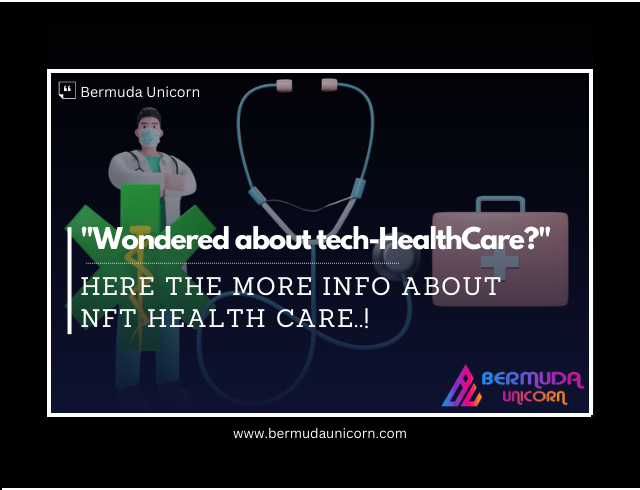![]()

In recent years, the healthcare industry has been revolutionized by the introduction of Non-Fungible Tokens (NFTs). NFTs have the potential to dramatically transform healthcare by allowing for secure, immutable digital ownership of data. This emerging technology is transforming how patients interact with their health records, physicians manage medical information, and institutions share critical data. NFTs, or Non-Fungible Tokens, are an emerging technology that is revolutionizing NFTs in healthcare. They have the potential to revolutionize how healthcare data is managed, stored, and monetized. In this article, we will explore the power of NFTs in the context of healthcare and discuss why they are becoming increasingly popular among medical professionals. We’ll cover topics such as blockchain technology, smart contracts, and distributed ledgers to demonstrate their growing impact on healthcare.
Benefits of NFTs in Healthcare

NFTs have the potential to revolutionize healthcare by providing secure and cost-effective access to medical records, reducing paperwork, and improving patient outcomes. NFTs are especially beneficial for both patients and healthcare professionals since they provide a secure way of storing patient data that is easily accessible. This can lead to improved efficiency in clinical operations, as well as better outcomes for patients. NFT technology is also being used to facilitate secure communication between clinicians and patients, allowing them to communicate securely without having their data exposed or misused. Additionally, NFTs can be used as a form of digital currency which can be used in place of traditional payment methods such as cash or credit cards. This allows healthcare organizations to more easily accept payments from their customers while still maintaining the security of their own systems. Finally, NFTs can allow healthcare providers to receive more accurate information on how their services are being used by patients, allowing them to make improvements where needed and improve overall patient care.
Limitations of NFTs
One limitation of NFTs is interoperability. Despite the great promise they offer to store data in a secure and immutable manner, they still cannot be used across different platforms or between healthcare organizations without an intermediary. This means that medical records stored using an NFT may not be accessible or transferable in the event of a patient switching providers, since each provider may have different protocols for storing and accessing medical information. Furthermore, existing regulations may restrict the use of NFTs; even if they are technically feasible, there could be legal issues preventing their implementation in some settings.
Another major limitation is scalability. Although blockchain technology offers high levels of security and privacy, it requires intensive computing power to process large amounts of data which can become prohibitively expensive for larger healthcare networks and organizations. Additionally, blockchain networks are only as secure as their weakest link and can be vulnerable to attack if nodes on the network are not properly secured against malicious actors or hackers who seek to gain access to sensitive data within them. Finally, due to their distributed nature, blockchains require all users on the network to agree upon changes before any modifications can take place, creating delays when updating records quickly is critical for medical care.
Practical Use Cases
Practical use cases of Non-Fungible Tokens (NFTs) in healthcare are rapidly emerging. For example, the blockchain-based platform Myreev is using NFTs to enable data sharing between healthcare professionals and their patients. This allows for a secure digital exchange of health records and other relevant data without the need for manual processes. Additionally, NFTs can be used to track patient care in real-time by providing an immutable record of treatments, medications, and outcomes that can be shared across providers and securely stored on the blockchain. This increases efficiency while ensuring accuracy and privacy. Furthermore, NFTs provide a way for medical research organizations to store anonymized clinical trial data in a secure decentralized platform that prevents any single entity from having access to all its components at once. As such, it can ensure more efficient collaboration between researchers around the world while protecting sensitive information from unauthorized access or manipulation.

Security Challenges
One of the major security challenges associated with NFTs in healthcare is data privacy and confidentiality. Many medical practices are built on a foundation of trust between patients and providers, which means that all patient data must remain secure and private. NFTs require blockchain technology, which relies on a transparent public ledger where all transactions are visible to everyone. This lack of privacy could be a potential concern for healthcare institutions since sensitive information about patient health may become accessible to anyone who has access to the blockchain network.
Another security challenge is transaction integrity. The nature of NFTs requires that transactions are immutable so they cannot be changed or reversed once they have been completed. This immutability makes it difficult to detect errors or malicious activities such as fraud or money laundering, which may put healthcare institutions at risk if not adequately safeguarded against these threats. Furthermore, due to their unique structure, it can also be challenging to verify the authenticity of an NFT when it comes time to redeem it for its intended purpose in the real world.
Conclusion
In conclusion, the potential use cases of NFTs in healthcare are numerous. From better tracking and tracing of medical records to managing prescription drug supply chains, the possibilities are endless. Additionally, with NFTs being immutable and transparent, they have the ability to drastically reduce fraud and mismanagement in healthcare systems. As technology progresses further, it is likely that more use cases for NFTs will be discovered. To facilitate this transition and make sure it is successful, all stakeholders should work together- governments, providers, insurers, and patients- to ensure that any new implementation is compliant with all regulations regarding data privacy and security. By doing so we can create a secure environment for everyone involved while still taking full advantage of all the benefits that come from using NFTs in healthcare systems.
